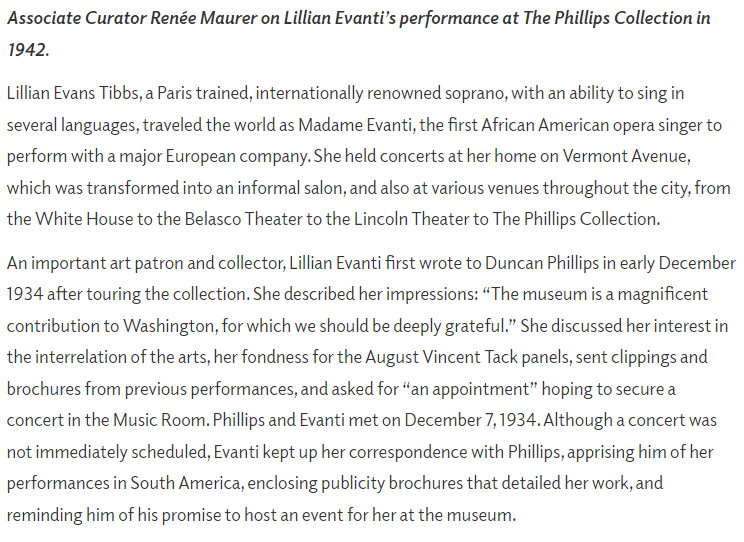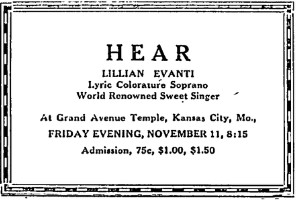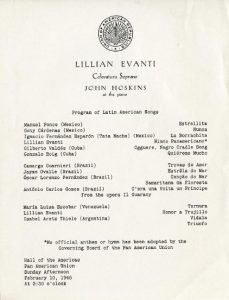The Research Process

We began our research process by casting a wide net, searching across databases, libraries, and museum archives simply to find existing information. We wanted to discover the depth of information available and begin to understand what kinds of sources preserve her legacy. This initial broad search gave us sources such as biographical articles detailing her career, but they glossed over many details of her personal life, which gave us more search terms to follow up on.
As we researched more specific details about locations she worked and content she performed, we began to find records of recital programs and various correspondences with colleagues both in America and abroad. With recital programs came newspaper advertisements and reviews of her performances, which gave us valuable insight into her reception and success.
However, with all the successful research and the many incredible sources we found documenting her career, there were some things that we were not able to find, namely audio and other media. We looked far and wide but there were no recordings we could find that were easily accessible to us as college students in Minnesota.
Additionally, we were unable to find a decent amount of reliable sources with specific detail about her time abroad. Specifically, this issue presented itself in the lack of information on her performances in Europe. We found newspapers detailing a few performances in Paris, but there was not much else. Furthermore, most of the information corresponded with her performances, but nothing else about her time abroad. These challenges contribute to gaps in our understanding of her life and career, which speaks to the importance of researching underrepresented musicians and doing them justice.
The fact that so little information exists about Lillian Evanti in contrast to her contemporaries shows us the lasting impacts of racism and discrimination that are still felt today. We can read reviews of concerts, recitals, and other performances telling us how beautiful and lyrical her voice was, but we will never be able to discover the true extent of her career, and by extension, her legacy will remain underappreciated.
Photos Cited
Figure 1:
“From the Archives: Lillian Evanti.” The Experiment Station. The Phillips Collection, February 25, 2022. Accessed 11/17/22. “https://blog.phillipscollection.org/2022/02/25/from-the-archives-lillian-evanti/.
Figure 2:
“Advertisement.” Plaindealer (Topeka, Kansas) TWENTY NINTH YEAR, no. FORTY FIVE, November 18, 1927: [FOUR]. Readex: America’s Historical Newspapers. https://infoweb.newsbank.com/apps/readex/doc?p=EANX&docref=image/v2%3A12A7EF1A4AC47F2D%40EANX-12CCEC6BAC53BF70%402425203-12CCEC6BC49B8CD8%403-12CCEC6C0B622388%40Advertisement.
Figure 3:
“Lillian Evans Tibbs Papers.” Evasn Tibbs Collection, Anacosita Community Museum Archives, https://edan.si.edu/slideshow/viewer/?eadrefid=ACMA.06-016_ref1339.

